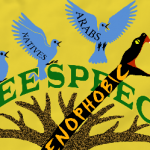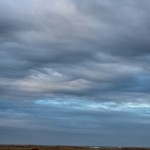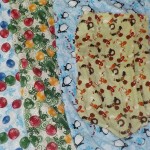 The longest night and day on earth occurs at the same time twice a year (approximately every 183 days). Currently Borealis (the northern hemisphere) will be experiencing the longest night, while Australis (the southern hemisphere) will be experiencing the longest day. In the Gregorian Calendar, that is most used globally, it falls on December 21st this year. The reverse will occur half a year later.
The longest night and day on earth occurs at the same time twice a year (approximately every 183 days). Currently Borealis (the northern hemisphere) will be experiencing the longest night, while Australis (the southern hemisphere) will be experiencing the longest day. In the Gregorian Calendar, that is most used globally, it falls on December 21st this year. The reverse will occur half a year later.
Here is a video that describes in detail how this works:
Below are two examples of calendars that directly express the solar changes on earth:

The Borealis celebrations of the longest night include Yule (Germanic), Meán Geimhridh/Midwinter/Alban Arthan (Celtic, Ancient Welsh, Neo-druidism), Nox (Saegoah), Beiwe (Sami people of Fennoscandia), Dongzhi Festival (East Asian Cultural Sphere), Goru (Dogon, Mali), Junkanoo (West Africa, Bahamas, Jamaica, Virginia), Lohri (Punjab, Pakistan & India), Lucia (Scandinavia), Makar Sankranti (Hindu, India and Nepal), Yalda (Persian), Şeva Zistanê (Kurdish), Soyal (Zuni & Hopi, North America), and Ziemassvētki (Latvia, Baltic states, Romuva).
Unfortunately the Australis celebrations of the longest day are difficult to find. One explanation as to why this is is because the majority of the human population resides in Borealis and therefore have more influence in global culture; in addition to historical imperialism that has sequestered or destroyed indigenous celebrations in Australis. Because of this the Borealis celebrations of the longest night are often duplicated in the south, even though the natural event is the opposite. One other explanation of why it is difficult to find Australis celebrations of the longest day is that most of the land masses in Australis are closer to the equator and therefore the majority of the population doesn’t experience the drastic shifts in amount of daylight.
Over time I hope to find and add Australis longest day of the year celebrations to this annual post to balance out the hemispheres.
Longest Night on Earth in Borealis
Humans are diurnal creatures – animals that are most active during the day and find it difficult to see in the dark. This inability to see greatly reduces activity as a way to avoid receiving injury from bumping into objects or nocturnal predators. So the dark is understandably something diurnal creatures dislike; hence many human cultures calling things that are deemed negative as ‘dark’.
Looking at customs that revolve around the longest night, many have a sense of apprehension that the days may not return and perform ritual acts as a way to entice the sun to come back, and when it does is greatly celebrated. This is sometimes done over the course of a week or longer as a way to measure and make sure that the days are indeed getting longer again. Hence many Longest Night celebrations and holidays covering a long time span in comparison to other holidays. Other customs with the foresight of previous years, knowing that the days begin to get longer after this point, don’t enact rituals to gain favor and instead just mark it in celebrations for the return of longer days.
Some of the most common features of this time of year are decorating with lights to lessen the surrounding dark; evergreens to surround yourself with more life; bonfires for light, warmth and as a center place for hosting outdoor events; feasting the last of the summer stock, and sharing seasonal songs and stories through the night. In the far north jingle bells are a common sight; stemming from when people rode sleighs down the night roads and having difficulty seeing ahead had run pedestrians over. To prevent these collisions from occurring, sleigh bells became heavily mandated so that people on the night roads can hear when someone is coming and step aside in advance. In modern times this has become unnecessary, leaving the once required jingle bells as festive decorations we now associate with the winter season.
Additional Festive/Seasonal Options
TREE
There is a lot of debate on how to go about decorating with an indoor tree, most commonly along the lines of Fake vs Real. There are two options outside of the Fake vs Real dilemma: Bringing in a mature seedling as your tree to decorate that you can plant in spring; Having a Nox Tree – a tree outside that is festively decorated with foodstuffs for your wild neighbours for the Eve of the longest night.
LANTERNS
Ice lanterns are gaining popularity and are a fun activity. All you need is two buckets, one small and one big that fit into one another but allow a thick wall of air around it, water and a freezer/cold outside. Fill the big bucket with enough water that the little bucket can be placed so that the tops are level and the bottom touches the water. Freeze the big bucket by itself, then place the little bucket in and fill with rest of the way with water and freeze. Pop it out and put it out on display with a candle. With practice you can place items in the ice for further decorations.
Red Glass lanterns as your only source of outdoor light (or red lights in general). This option may sound strange but it adds a fabulous effect in that you have light with no light pollution, which means you can have a better view of the stars. Just imagine if this was a common form of decoration everywhere – suburban and urban environments would finally be able to have a clear view of the night sky.
MIRRORS
Mirrors can help repel a lot of the dark in your home if strategically placed. Corner mirrors that fit into the ceiling corners does wonders for this. But if that is not feasible, using the glass on your photo frames as mirrors behind your candle light in high places, like the standing fridge, can double the amount of light in your home.
NOCTURNAL CREATURES
This is a good time of year for those living in Borealis to learn more about the creatures of the night in your neighbourhood. Who are they? What are they like? What can you do to be a good neighbour? A fun option is to dress up like your favorite nocturnal creature armed with fun facts about who you are representing. Toss in a game of predator tag and you’re set.
SHADOWS
What better time of year to play with shadows. You can have games on who can make the best hand shadow, or best of a specific shape of shadow i.e. dog. And you can go further with that and make it a story telling experience. You can make silhouette cutouts and a light screen for family performances; or a guess who this is shadow game where there is a light behind a sheet in front of a doorway and a team is behind the sheet, with one member casting a shadow that they’ve disfigured to with stuffed shirts, hats, faux facial hair etc. to try to have the guessing team guess wrong. What you can do with shadows can easily go beyond these small suggestions.
There are other sorts of games and activities mentioned on the Nox page of the official Ehoah website that you might want to try out for this time of year. Kid games of Touch and Sound Hide and Seek, Head Lights Tag etc, to Adult games of Blow Pipe and Light, Night are potential family favorites.
What do you do to celebrate this longest night/day of the year where you are?
















